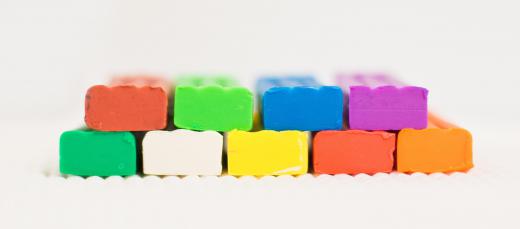Plasticizers are chemical compounds a company can add to clay, concrete, cement, and plastic products to improve their workability. People have been using additives in materials production for a very long time, with examples of plasticizers being present in ancient pottery and other archaeological materials. Some of the same compounds early humans added to clay continue to be in use today; water, for example, is an excellent plasticizer for increasing the moisture content in clay to make it easier to work. Their composition can vary considerably, and a number of companies produce plasticizers for various applications.
Some of these products make it easier to work materials during production, while others change chemical properties for better performance of finished products. For materials like concrete, cement, and gypsum board, a company can add a plasticizer while it is making products to make the material easier to work. It will typically flow more readily, with fewer bubbles, lumps, and other problems. This will result in a stronger finished product with a neat, even appearance and can also cut down on production costs; plasticizers in concrete, for example, can prevent it from setting up too quickly and causing problems on a work site.

Others change the chemical composition of a product to make it more durable and flexible when it is complete. Plasticizers are often added to plastic products to address problems like cracking and breaking. Many polymers are very brittle without these additions. Most plastics with flexibility, especially those with a jellylike consistency, contain added plasticizers to improve their texture. They can also be more breathable and porous as a result, which can sometimes create problems; some plastics tend to become sticky over time, for example, and can harbor bacteria.
The properties of some plasticizers are toxic and there are concerns about the risk of leaching, particularly with a group of products known as phthalates. Companies once widely used them to produce everything from polyvinyl chloride pipes for plumbing to children's toys. Research suggested that the chemicals leached and exposed people to the risk of health problems, leading to industry reforms to get these chemicals out of many plastic products.
People with questions about the use of plasticizers in the products they use in daily life can consult the manufacturing data to see what kinds of chemicals may have been part of production. Many companies concerned about health and environmental issues make this information available, and some specifically produce products like phthalate-free toys for consumers who express worries about product safety. Consumer advocacy organizations usually have current information on safety concerns about various products and how manufacturers are working to address these issues.
Ever since she began contributing to the site several years ago, Mary has embraced the exciting challenge of being a About Mechanics researcher and writer. Mary has a liberal arts degree from Goddard College and spends her free time reading, cooking, and exploring the great outdoors.

